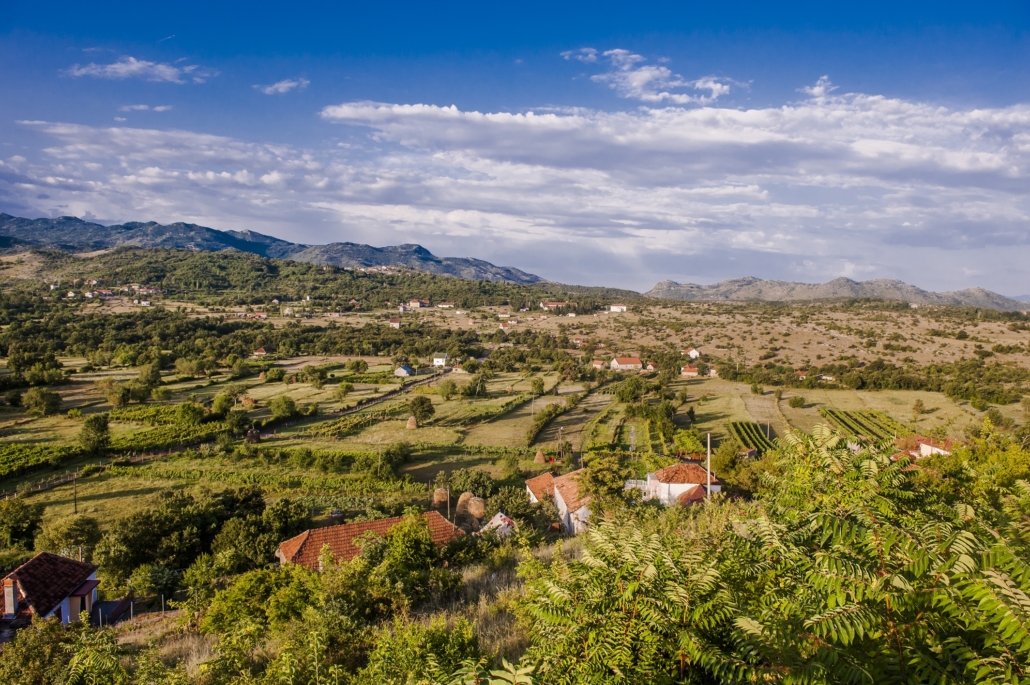Grape varieties you can grow in the Kuči wine subregion
The leading variety in Kuči is the native Vranac, which makes up 36.52% of the vineyard area and an additional 35.12% in mixed plantings. This grape is Montenegro’s flagship variety, and in Kuči it often shows a more rustic, robust, and earthy character, reflecting the harsher upland conditions of the subregion.
Other varieties you can grow in the region of Kuči are:
- Chardonnay (7.10%) – an international variety that adapts well to Kuči’s cooler nights, producing whites with freshness and balance.
- Čubrica (3.55%) – a traditional local grape, rare outside the region, contributing to the preservation of Montenegro’s biodiversity.
- Kratošija (0.25%) – one of the oldest Balkan varieties, historically linked to Zinfandel/Primitivo, present in mixed plantings.
- In addition to these, smaller amounts of indigenous and permitted international varieties are cultivated, enriching the subregion’s potential for unique blends.
To experience and taste wines in the Kuči wine subregion, you can visit wineries Đukić and Rajković.
Terroir and climate of the Kuči wine subregion
The Kuči subregion is defined by its rugged, mountainous terrain, with vineyards often situated on sloping, stony soils. These soils are typically karst-based, shallow, and well-drained, forcing vines to dig deep for water and nutrients, which contributes to concentrated flavours in the grapes.
The climate is continental-Mediterranean, with hot summers tempered by cool nights due to higher altitudes. This diurnal temperature variation allows grapes to ripen fully while retaining acidity, a key factor for producing wines with structure, freshness, and aromatic intensity.
Tradition and heritage of the Kuči subregion
Kuči is not only a wine subregion but also an area with a rich cultural identity, historically known for its strong tribal traditions. Vine growing and winemaking here have been practised for centuries, often for household consumption and local trade.
Many families still maintain small vineyards and produce wine in traditional stone cellars, keeping alive practices that date back generations. This strong link between viticulture and cultural heritage makes Kuči wines unique — they are not simply agricultural products but also a reflection of history, resilience, and identity.
Potential and future development of the Kuči wine subregion
Although Kuči’s vineyard area is currently small, the subregion has significant potential for growth. Its upland climate, authentic varieties, and rugged terroir position it as a promising site for boutique and premium wine production, particularly for Vranac and traditional indigenous grapes like Čubrica.
For wine professionals, Kuči offers an exciting field for experimentation with both local and international varieties, especially those suited to climate change resilience. For casual wine lovers, it represents an opportunity to discover rare, small-batch wines that capture the essence of Montenegro’s mountainous landscapes.


